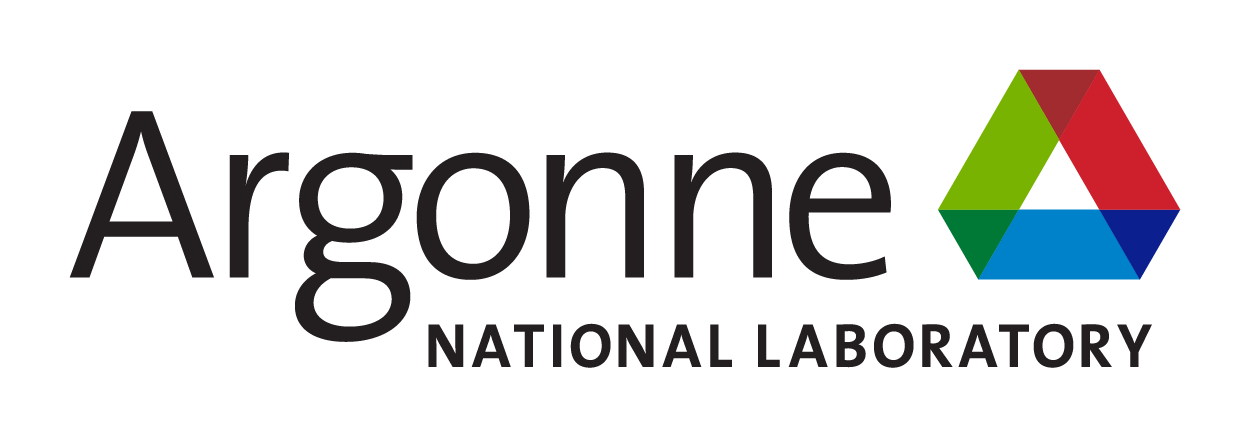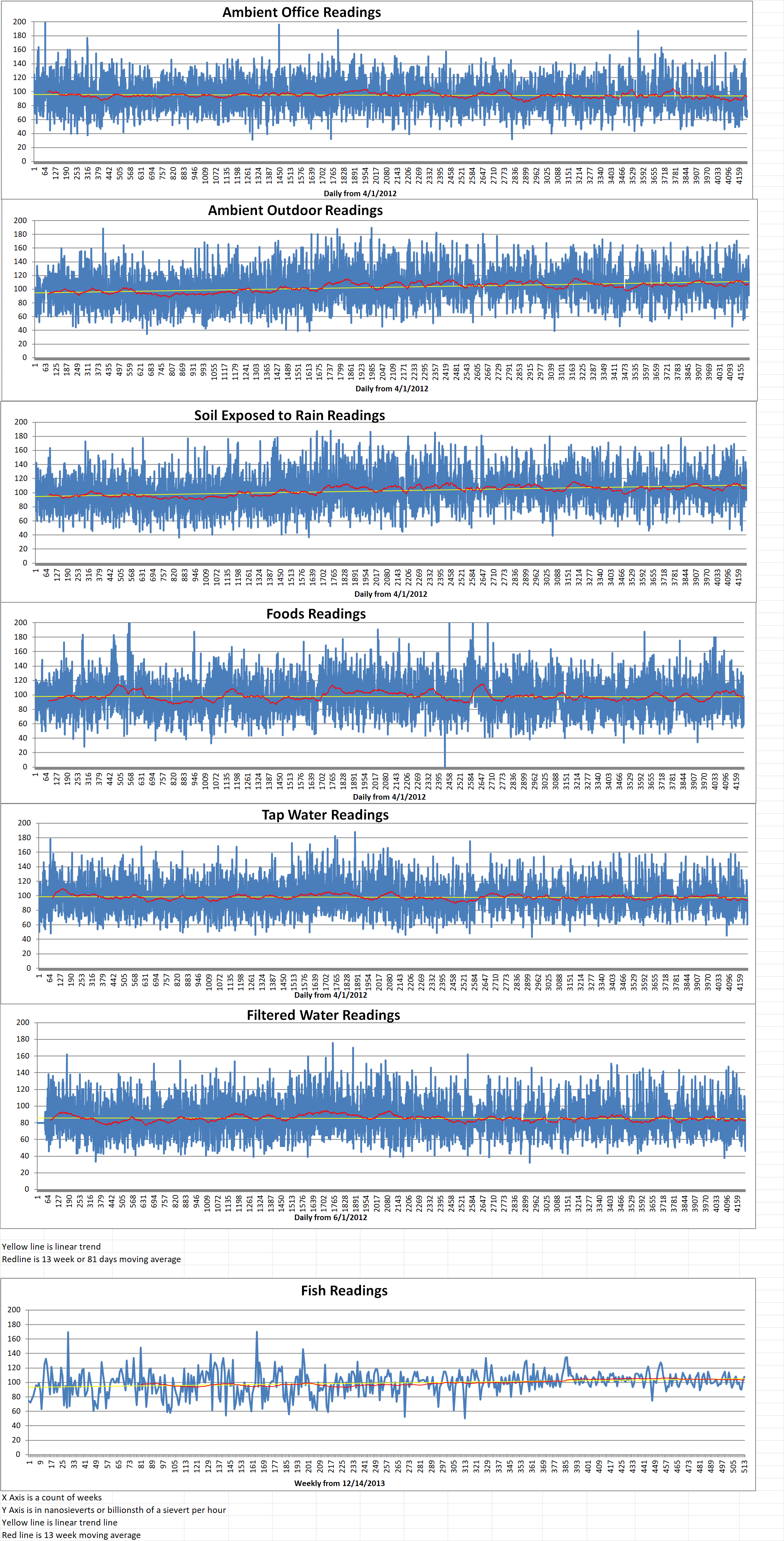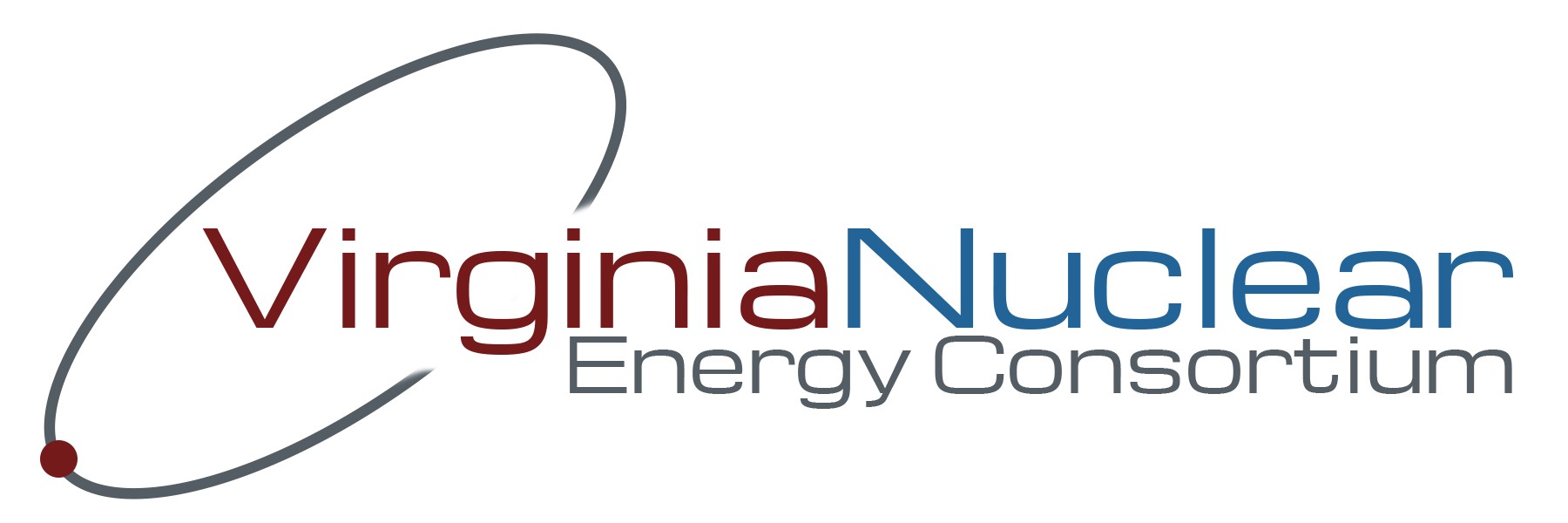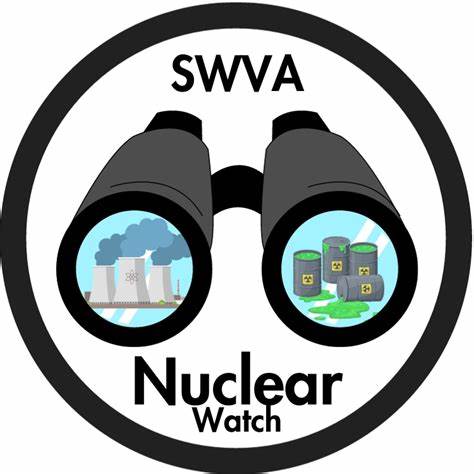The current fleet of commercial nuclear power reactors across the U.S. is cooled by water from a variety of sources. Rivers, lakes, and oceans are fed through systems that extract and dissipate heat from the reactor cores. However, the recent effects of climate change have been raising the temperature of bodies of water to the point where they cannot be used to cool reactors.
Climate scientists and nuclear science and engineering experts at the U.S. Department of Energy’s (DoE) Argonne National Laboratory (ANL) are collaborating to develop a plan B for nuclear power in Richland, Washington.
Scientists at the ANL will use Gateway for Accelerated Innovation in Nuclear (GAIN) funding from DoE to work with Washington’s Energy Northwest (EN) to guide the design and selection of future nuclear reactor cooling systems and their impacts on the cost of electricity in Washington state.
Rick Vilim is the manager of the Plant Analysis and Control and Sensors department in Argonne’s Nuclear Science and Engineering division. He is leading the research project with the assistance of Rao Kotamarthi, senior scientist in Argonne’s Environmental Science division.
According to Vilim, the most economical and best way to cool a reactor is to use a local, flowing waterway. These would include such sources of water as a lake or a river, for what is called “wet” cooling. Wet cooling makes it possible to easily conduct heat away from a reactor and its cooling rods. That is the current cooling design employed at Washington’s nuclear power plant, the Columbia Generating Station (CGS) in Richland, which produces nearly zero greenhouse gas emissions and eight percent of the state’s electricity. It relies on a steady flow of cold water from the Columbia River to keep its temperature down.
However, when considering construction of future nuclear power plants, EN thought it wise to develop a contingency plan in case the river conditions change. Despite the well-established wet climate of its most populous city, Seattle, Washington state is quite temperate and dry east of the Cascade Mountain Range. If evolving climate models indicate that warmer, drier days lie ahead, more aridity will obviously affect the volume, flow, and temperature of the Columbia River.
Vilima explains that there is an alternate dry cooling design which uses ambient air circulated across a reactor’s heat exchangers to conduct heat away from a reactor core. This would replace the reliance on a river or lake, or using fans or physics similar to those in a house chimney or car radiator.
Vilim said, “Dry cooling is not quite as efficient or as economical as wet cooling. However, if wet cooling isn’t available, it is your best option.”
Kotamarthi and his team are able perform impact analyses of risks from a changing climate, such as drought, heat waves and wildfire. The researchers can also provide translation of what that data means for local, immediate decisions. In addition, they can recalculate the data to demonstrate the effect 25 or 50 years from now. High performance computing resources at ANL give Kotamarthi and his group the capability to develop very high-resolution regional scale climate model projections. The current model resolution is about seven and a half miles. However, newer models in development are expected to get as specific as a two-and-a-half-mile area.
Blog
-

Nuclear Reactors 1366 – Argonne National Laboratory Is Working On Alternative Cooling Schemes For The Columbia Generating Station
-
Nuclear News Roundup April 05, 2024
Second CGN Hualong One starts up world-nuclewar-news.org
Newcleo teams up with CEA on reactor development world-nuclear-news.org
Commissioning work is beginning at Akkuyu 1 world-nuclear-news.org
Fourth Korean APR-1400 begins commercial operation world-nuclear-news.org
-

Geiger Readings for April 05, 2024
Ambient office = 70 nanosieverts per hour
Ambient outside = 91 nanosieverts per hour
Soil exposed to rain water = 89 nanosieverts per hour
Garlic from Central Market = 84 nanosieverts per hour
Tap water = 66 nanosieverts per hour
Filter water = 56 nanosieverts per hour
-

Nuclear Fusion 68 – Princeton Plasma Physics Laboratory Is Working On A New Design For A Stellarator
A team of scientists has achieved a major breakthrough in fusion energy technology. They have built a first-of-its-kind fusion experiment using permanent magnets. This is a surprisingly simple technique that could potentially dramatically reduce the cost of future fusion power plants.
The team is based at the U.S. Department of Energy’s (DOE) Princeton Plasma Physics Laboratory (PPPL). They have pioneered a new design for a type of fusion machine called a stellarator.
Stellarators use complex magnetic fields to confine plasma which is the superheated state of matter needed to fuel the fusion reactions that power the Sun and stars. If it is possible to harness on Earth, fusion could offer an abundant source of clean energy.
Stellarators and tokamaks are both devices designed to use magnetic fields to contain the incredibly hot plasma needed for nuclear fusion.
The key difference between the two types of fusion reactors lies in how they create the magnetic field that keeps the plasma in place. Tokamaks utilize a powerful electric current flowing through the plasma itself, along with external coils. Stellarators rely solely on complex, twisted magnetic coils to shape the field. This makes stellarators inherently more stable than tokamaks. This means that they are suitable for continuous operation. However, tokamaks are currently better at maintaining high temperatures in the plasm. Scientists hope to use stellarators as power plants in the future if they can replicate the fusion process that occurs within stars like our Sun.
Existing stellarators create their complex magnetic fields with precisely constructed and expensive electromagnets. However, the PPPL team’s innovative device, called MUSE, employs a different approach. Instead of electromagnets, the PPPL stellarators rely on permanent magnets. These magnets the same kind that adorn refrigerators. This approach drastically simplifies construction.
Graduate student Tony Qian, whose research was key to MUSE’s development, said, “Using permanent magnets is a completely new way to design stellarators. This technique allows us to test new plasma confinement ideas quickly and build new prototypes easily,”
MUSE’s clever design isn’t just about how much it costs. Scientists theorized that permanent magnets could be used in this way. However, it took decades for someone to pull it off. Michael Zarnstorff is a senior research physicist at PPPL. He first realized the potential in 2014. “I realized…permanent magnets could generate and maintain the magnetic fields necessary to confine the plasma so fusion reactions can occur,” he reveals.
Stellarators hold a significant advantage over a popular alternative fusion machine design known as a tokamak. Tokamaks also use magnetic fields. However, they rely on electric currents flowing within the plasma itself. Those currents can be unstable which makes fusion reactions harder to sustain. Stellarators don’t have this issue and this allows them to run continuously.
The problem is that the magnets currently used in stellarators’ have been notoriously difficult to design and manufacture. This engineering challenge has relegated the stellarator design to an underdog position despite its potential edge. MUSE could change the game entirely with its readily available, easily shaped magnets.
MUSE’s design embodies a crucial property called quasi-symmetry. This means that even though the stellarator’s shape might look irregular, the strength of its magnetic field is very consistent throughout. This uniformity helps keep the plasma neatly contained. This, in turn, makes fusion more likely. MUSE is designed to be superbly quasi-symmetrical. This makes it far more stable than earlier stellarator models.The PPPL team is now preparing for experiments to study MUSE’s quasi-symmetry. They are hoping it will provide crucial insight into how well it will actually perform. Ultimately, MUSE’s success offers a glimpse into a future where fusion power plants are more affordable and accessible. Permanent magnets will play a starring role in this clean energy revolution.
-
Nuclear News Roundup April 04, 2024
Grossi condemns drone strikes at Zaporizhzhia site world-nuclear-news.org
EU top diplomat says Russia should withdraw from Zaporizhzhia Nuclear Power Plant Pravda.com.ua
Israel prepared to strike Iranian nuclear facilities if Tehran launches attack timesofisrael.com
European Nuclear Plants Put Out of Work by Green Power Surge finance.yahoo.com
-

Geiger Readings for April 04, 2024
Ambient office = 73 nanosieverts per hour
Ambient outside = 128 nanosieverts per hour
Soil exposed to rain water = 133 nanosieverts per hour
Blueberry from Central Market = 59 nanosieverts per hour
Tap water = 60 nanosieverts per hour
Filter water = 51 nanosieverts per hour
-

Nuclear Reactors 1365- Activists In Virginia Are Fighting The Development Of SMRs In Southwest Virginia – Part 2 of 2 Parts
Part 2 of 2 parts (Please read Part 1 first)
The day after the Governor Youngkin made what appeared to be his off-the-cuff comment to reporters, the Department of Virginia Energy held a public meeting at Mountain Empire Community College in Big Stone Gap. This event was the second public meeting that the SWVA Nuclear Watch group requested of VA Energy. Most of the people attending appeared tired of the presentation and answers to their questions.
As for SWVA Nuclear Watch, their formal response to the governor and all of his utility, corporate and regional economic development allies, charmed and driven by the chance to land federal nuclear subsidies, is clear. The SWVA Nuclear Watch members said that they haven’t trusted the governor to this point and they don’t trust him now. Duane Miller is the LENOWISCO Planning District director. Both he and the governor said that SWVA could still host SMRs, just possibly not the first ones.
There is an uprising among the citizens of Southwest Virginia. They are concerned and getting angry, but their opposition is based on solid research. They use data and facts and the knowledge, experiences and creativity of the people who have been left out of the discussion for far too long by politicians and their special interest donors. A cabal of individuals and organizations in Southwest Virginia are making decisions about people’s lives and livelihoods that is to their gain and the people’s loss. The supporters of SMRs are proclaiming, “There are millions of federal dollars coming down and we want our share.” But the citizens of SWVA want to know where that money is going. To the welfare of the people or to consultants doing their studies, quasi-government authorities with possible conflicts of interest, utility companies who give hundreds of thousands of dollars to the politicians?
Right now, SWVA residents are appealing to the governor to veto a bill passed in the General Assembly that will allow Appalachian Power to pass on SMR design and development costs to their ratepayers (formerly known as customers). These costs will have to be paid even if the nuclear reactors are never put into operation. Governor Youngkin vowed to the audience last week in Tazewell County that he would never raise their taxes. However, his decision to sign House Bill 1491 would essentially be taxing the income of the people. In February of this year Appalachian Power raised residential rates for electricity by ten percent!
This op-ed has been concerned about SMRs. However, the basis for going after federal dollars for them and other unproven energy projects, such as a blue hydrogen hub and a carbon capture & storage facility, is to supply energy for data centers. Data centers require huge amounts of electricity and are not a part of domestic and industrial activity. SWVA Nuclear Watch believes that solar energy is a truly clean, renewable energy source. Solar energy can provide essential electricity and jobs to SWVA without the cost overruns, schedule delays and dangers to be expected from the development of SMRs. -
Nuclear News Roundup April 03, 2024
US Nuclear Power Plant Reaches Maximum Output As Commissioning Gathers Pace nucnet.com
Nuclear storage proposal near Randsburg? Flyer stirs concern turnto23.com
Michigan could become nuclear power hub under proposed legislation 9and10news.com
Fourth Korean APR-1400 begins commercial operation world-nuclear-news.com
-

Geiger Readings for April 03, 2024
Ambient office = 63 nanosieverts per hour
Ambient outside = 95 nanosieverts per hour
Soil exposed to rain water = 90 nanosieverts per hour
Bannana from Central Market =98 nanosieverts per hour
Tap water = 91 nanosieverts per hour
Filter water = 84 nanosieverts per hour
-

Nuclear Reactors 1364 – Activists In Virginia Are Fighting The Development Of SMRs In Southwest Virginia – Part 1 of 2 Parts
Part 1 of 2 Parts
A long-held stereotype of Southern Appalachians is that they are fatalistic, having a sense of being powerless to change their life circumstances. In a 1965 publication, “Yesterday’s People: Life in Contemporary Appalachia,” described the people. In the coalfields of Southwest Virginia today, there is organized effort among the people to counter this prejudice.
Governor Youngkin arrived unannounced at a former coal mine site near Norton in October 2022. He appeared at an invitation-only press conference to say that his “moonshot” was to put the nation’s first small modular nuclear reactor (SMR) in Southwest Virginia to revitalize the waning coal-based economy. This highly-publicized media event included statements from the region’s legislative representatives, local officials and individuals with special interests in promoting nuclear energy. They all declared the safety of these as-yet-undeveloped SMRs.
For more than a year there were no public meetings about SMRs, only legislative bills to support them as well as a site feasibility study. This study alarmingly identified seven “ideal” locations for the nuclear reactors near neighborhoods, schools, businesses, water reservoirs and even the Red Onion prison with the caveat that an “evacuation plan” would be required. In response to local environmental justice groups calling for transparency, officials said repeatedly that it was too early for public involvement. The officials said their concerns were premature, while avoiding discussing the dangers of creating and storing nuclear radioactive waste on site and the safety and health risks to local communities.
This past week, Governor Youngkin returned to Southwest Virginia. Once again, he did not announce his itinerary in advance. He began his day holding an invitation-only meeting at UVA’s College at Wise, and this time barred the press. As he left his public meeting in Abingdon at the end of the day, he responded to a reporter’s question about his plan to put SMRs in the coalfields. His stunning remark was that “The state’s first small nuclear reactor likely won’t be built in Southwest Virginia after all.”
Southwest Virginia (SWVA) Nuclear Watch is a burgeoning grassroots movement in opposition to siting SMRs here. During Youngkin’s trip to Wise County, local activists protested with yard signs and billboards that said, “Don’t NUKE SWVA.” Over the past seventeen months concerned citizens have issued press releases, distributed a brochure, placed classified ads and held the first public SMR Town Hall meeting in Norton, followed by community conversations in Clintwood, Pound, Wise, Norton, Coeburn, St. Paul, Big Stone Gap, Stickleyville and Dungannon. The purpose of these activities was to raise public awareness. One local merchant said, “90% of the customers coming into my store know little or nothing about what is going on.”
The activists have done their homework, unlike Delegate Kilgore who is reported saying he knew SMRs were clean, safe and reliable because a panel of experts told him they were. No SMR has been built or operated in the United States to validate these claims. NuScale is the only company given a design permit by the federal Nuclear Regulatory Commission. They went so far over cost, after billions of federal dollars in subsidies, that rural communities in Utah pulled out of an agreement to acquire electricity from the SMRs in ten years because of the high cost they were sure to incur. Utilitydive.com reported that “the financial challenges and cost trends witnessed in that (Utah) case will afflict any SMR project.” NuScale belongs to the Virginia Nuclear Energy Consortium.
Please read Part 2 next
